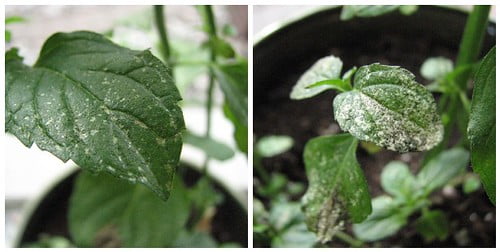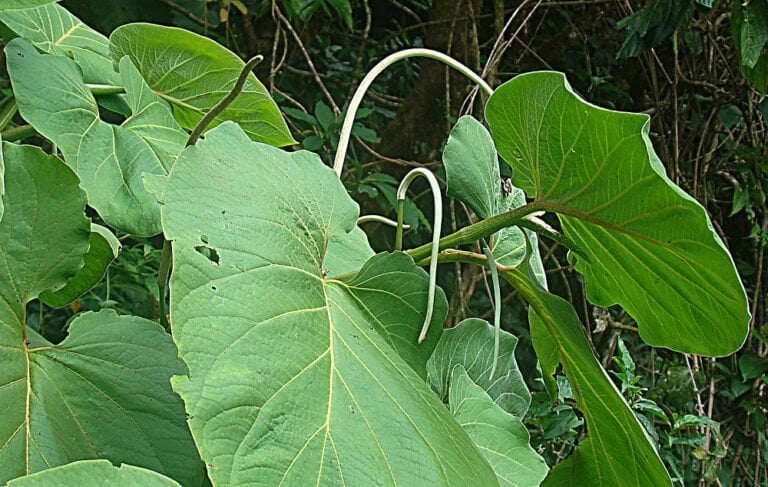Hyssop
Hyssop, a vibrant perennial herb, exudes a delightful fragrance when its leaves are crushed. Offering a plethora of antioxidants and anti-inflammatory properties, it aids in respiratory and digestive health. Prized for centuries, hyssop has deep-rooted historical and symbolic significance in various cultures. Thriving in sunlight, well-drained soils, and USDA zones 3-8, it blooms abundantly with timely pruning. This versatile herb, used in teas, essential oils, and culinary dishes, holds the promise of both flavor and wellness. Discover the enchanting world of hyssop for a journey into botanical delight and holistic benefits.
Overview of Hyssop
Hyssop, a charming herb known for its fragrant flowers and culinary versatility, holds a special place in the botanical domain as a semi-evergreen perennial or sub-shrub native to Europe, Asia, and Africa. One of the most enchanting features of hyssop is its leaves, which not only add a touch of elegance to any garden but also release a sweet scent when crushed, making every encounter with this plant a sensory delight.
Beyond its ornamental value, hyssop boasts a range of health benefits attributed to its leaves. Rich in antioxidants and natural compounds, hyssop leaves have been traditionally used in herbal medicine for their anti-inflammatory, antibacterial, and expectorant properties. Consuming hyssop leaves, whether fresh or dried, can help alleviate respiratory issues like coughs and congestion while also aiding digestion and promoting overall well-being.
In addition to its aromatic foliage and medicinal uses, hyssop’s leaves are a flavorful addition to various culinary creations. Whether chopped fresh into salads, steeped in teas, or used as a seasoning in savory dishes, hyssop leaves impart a unique taste that pairs well with a variety of flavors. This culinary versatility further underscores the plant’s significance not just in botanical circles but also in kitchens worldwide.
Historical Significance
With roots reaching far back into the annals of time, what secrets of antiquity does the historical tapestry of hyssop reveal? Hyssop, a revered member of the botanical domain, has been intertwined with human history for centuries as one of the quintessential medicinal plants. From classical antiquity to the religious texts of old, hyssop has played a crucial role in purification rituals, symbolizing cleansing and spiritual renewal. In ancient Egypt, this aromatic herb was utilized for purgation, while priests employed it for ceremonial cleansing due to its perceived sanctity and purifying qualities.
Through the ages, hyssop has found its place in the world of traditional medicine, where its healing properties have been revered and utilized. The essential oil derived from hyssop contains potent antiseptic compounds such as thujone and phenol, making it a valuable resource for addressing various ailments. While its medicinal benefits have been extolled in numerous sources, caution is advised due to potential side effects like seizures, underscoring the need for responsible usage.
The historical and medicinal significance of hyssop not only highlights its therapeutic potential but also underscores its enduring cultural importance. As a symbol of health and spiritual purification, hyssop continues to weave its way through the tapestry of human history, a confirmation to the timeless allure of nature’s healing bounty.
Cultivation and Growth Requirements
Nurturing the growth of hyssop demands attention to specific environmental conditions and care practices. Hyssop, a plant with a sweet aroma often used to flavor dishes, thrives in full sun and well-draining soil. To guarantee ideal growth, it is essential to provide these conditions. Pruning hyssop occasionally not only maintains its shape but also promotes abundant blooming, adding vibrancy to your garden.
This herb, recognized for its culinary and ornamental uses, flourishes best in USDA Hardiness Zones 3-8. With heights ranging from 2 to 5 feet and widths of 1 to 3 feet, hyssop can make a striking addition to any herb garden. When it pertains to planting, whether by transplanting or direct seeding, timing is crucial. Aim for 8-10 weeks before the last frost to give your hyssop a head start.
For direct seeding, remember to sow the seeds at a depth of 1/4 inch. Space them 12-18 inches apart with rows spaced 6-12 inches from each other. Following these guidelines will help your hyssop plants establish themselves successfully, ensuring a bountiful harvest and a beautiful display of this fragrant herb in your garden.
Medicinal Uses
Known for its versatile healing properties, hyssop has been utilized in traditional medicine for centuries to address various respiratory ailments and promote overall well-being. This herb has a long history of traditional medicinal use, particularly for respiratory issues like coughs and colds. Here are some of the medicinal uses of hyssop:
- Respiratory Support: Hyssop is well-known for its expectorant properties, which help clear mucus from the respiratory system. It is commonly used in the form of hyssop tea to alleviate symptoms of bronchitis, asthma, and sore throats.
- Anti-Inflammatory Benefits: Believed to possess anti-inflammatory properties, hyssop can be beneficial for conditions like arthritis, helping to reduce inflammation and alleviate pain.
- Aromatherapy: Hyssop essential oil is used in aromatherapy for relaxation, stress relief, and improving mental clarity. Inhaling the aroma of hyssop oil can have a calming effect on the mind and body.
- Digestive Aid: Hyssop has been used to aid digestion and relieve gastrointestinal issues. It can help soothe indigestion, bloating, and abdominal discomfort.
- Immune Support: Rich in antioxidants, hyssop may help boost the immune system and protect the body from oxidative stress.
Hyssop’s medicinal uses make it a valuable herb in promoting health and well-being.
Culinary Applications
I admire the diverse flavor profile of hyssop, from its slightly minty undertones to its hints of citrus and floral notes. Incorporating hyssop in my culinary creations brings a surge of freshness that lifts dishes to new heights. Pairing hyssop with savory stews, zesty salads, or aromatic soups is a delightful journey for the taste buds.
Flavor Profile of Hyssop
With its invigorating, floral essence interwoven with subtle notes of bitterness and sweetness, hyssop emerges as a versatile culinary herb that can enrich a wide array of dishes.
- Improves Meats: Hyssop adds a revitalizing and aromatic touch to poultry, lamb, and pork dishes.
- Complements Fish: Its flavor pairs well with fish, bringing out the delicate flavors of seafood.
- Elevates Vegetables: When added to vegetable dishes, hyssop provides a unique herbal dimension.
- Adds Depth to Salads: Sprinkling hyssop leaves over salads imparts a fresh and zesty flavor.
- Sweetens Desserts: Hyssop can be used in desserts like sorbets and cakes to add a hint of floral sweetness.
Cooking Techniques With Hyssop
Exploring the culinary realm with hyssop opens a gateway to a world of dynamic flavors and fragrant delights waiting to lift your dishes. The taste of hyssop is a unique blend of minty vitality with floral undertones, making it a versatile herb in the kitchen. When using hyssop in cooking, whether fresh or dried, its leaves release a invigorating scent that enriches soups, stews, and salads. Incorporating young shoot tips of hyssop into your culinary creations will add a burst of flavor that complements a wide range of dishes. Experimenting with hyssop oil can also infuse your food with a delightful aroma, perfect for enriching the taste profile of your favorite recipes.
Pairing Hyssop With Dishes
Enhancing culinary creations with hyssop is akin to orchestrating a symphony of flavors that dance harmoniously on the palate, lifting dishes to new heights of botanical delight. In my culinary journey, I have discovered the art of pairing hyssop with various dishes, creating a sensory experience that lingers in the memory. Here are some delightful ways to incorporate hyssop into your cooking:
- Lamb Chops: Infuse the warm bitter taste of hyssop into succulent lamb chops for a unique flavor profile.
- Citrusy Fish Fillets: Pair long, sweet-scented hyssop with fish fillets to add a invigorating twist to your seafood dishes.
- Herbaceous Salad Dressing: Create a vibrant salad dressing with hyssop to heighten the freshness of your greens.
- Minty Chicken Soup: Add dried hyssop to chicken soup for a comforting and aromatic touch.
- Sorbet Delight: Experiment with hyssop in sorbets for a floral and sweet dessert experience.
Potential Health Benefits
As a plant enthusiast, I am excited to share the extraordinary potential health benefits of hyssop. This herb’s antioxidant properties not only combat harmful substances in the body but also support the immune system. Additionally, hyssop’s role in respiratory health and its antimicrobial properties make it a promising botanical ally for overall well-being.
Immune System Support
With its abundant antioxidant content and antimicrobial properties, hyssop emerges as a compelling botanical ally in supporting the immune system’s strength and vigor. The taste and has long immune system support hyssop leaves are known for their potential health benefits. Here are some ways hyssop may aid in immune system support:
- Hyssop is believed to have immune-boosting properties due to its antioxidant content.
- Studies suggest that hyssop may help support the immune system by combating harmful substances in the body.
- The antimicrobial properties of hyssop could contribute to overall immune health.
- Hyssop’s potential anti-inflammatory effects may aid in supporting a healthy immune response.
- Including hyssop in your diet or as a supplement may offer immune system support based on its traditional uses and reported benefits.
Respiratory Health Aid
Hyssop’s longstanding reputation as a respiratory health aid stems from its traditional use in easing coughs and congestion. The warm and comforting nature of hyssop makes it a great ally for respiratory support. When brewed into teas or added to foods and beverages, hyssop can help soothe the throat and promote clear breathing. The expectorant properties of hyssop are particularly beneficial, aiding in the expulsion of mucus from the respiratory tract. In addition, the antiseptic qualities of hyssop make it effective in fighting off respiratory infections. For a more concentrated form of respiratory relief, the use of oil of hyssop in aromatherapy can provide targeted support for respiratory health while also promoting relaxation.
Antioxidant Properties
Exploring the lush domain of Hyssopus officinalis’ antioxidant properties reveals a botanical treasure trove that ensures to rejuvenate and protect your body’s cellular health. The leaves and flowers of this exquisite herb are packed with antioxidants that hold immense potential for enhancing overall well-being. Here are some exciting aspects of hyssop’s antioxidant properties:
- Hyssop is believed to combat harmful substances in the body.
- Scientific literature suggests potential health benefits related to its antioxidant properties.
- Antioxidants in hyssop may protect cells from damage caused by free radicals.
- Hyssop’s antioxidant properties contribute to promoting overall health.
- Incorporating hyssop into your diet or skincare routine can provide antioxidant benefits for your body.




